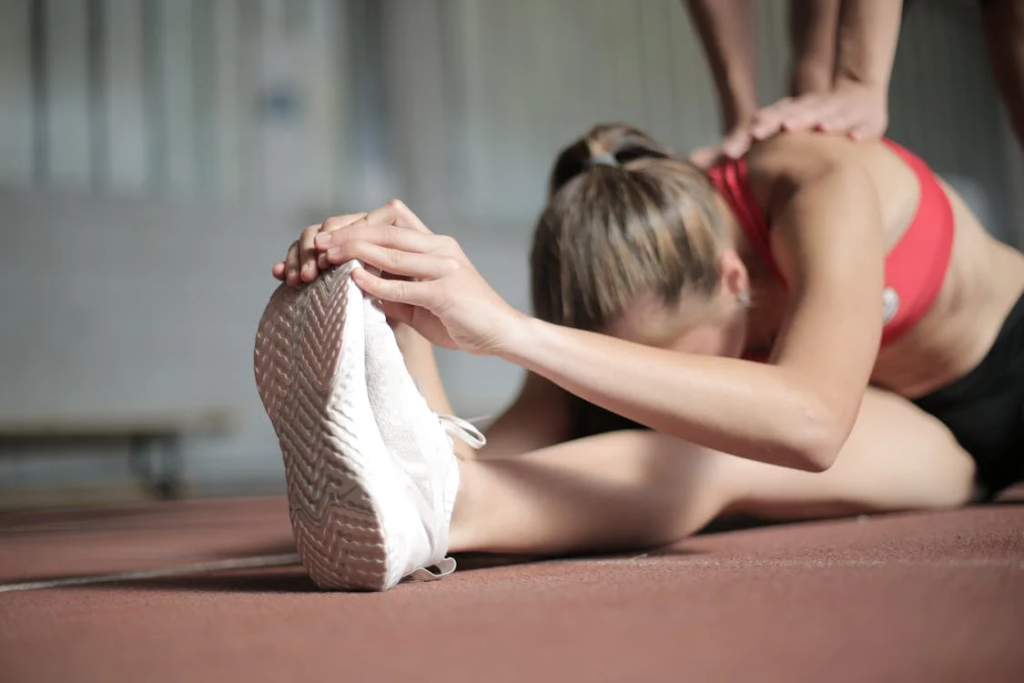Yoga offers benefits beyond physical movement, supporting overall health and well-being in daily life. Enthusiasts can enhance wellness by incorporating mindful nutrition, proper sleep, and comfortable footwear choices.
Small changes improve energy, mental clarity, and physical resilience, complementing the benefits gained through yoga practice.
Prioritizing supportive habits strengthens the body while fostering a deeper connection between mind and movement. Breathwork and mindfulness exercises further extend yoga’s influence, reducing stress and enhancing focus.
Everyday routines become opportunities for self-care, reinforcing balance and inner peace beyond structured yoga sessions. Adopting these principles creates a lasting impact, promoting wellness beyond time spent practicing yoga poses.
Nourishing the Body with Mindful Nutrition
Proper nutrition fuels movement, mental clarity, and sustained energy for a well-balanced yoga practice. A diet rich in fresh vegetables, lean proteins, and healthy fats supports muscle recovery effectively. Hydration plays a critical role in keeping joints flexible and digestion efficient for optimal body function.
NCOA notes that joint cartilage is about 80% water, making hydration essential for flexibility and comfort. Staying hydrated keeps joints lubricated, reducing friction and preventing stiffness during daily movements. Well-hydrated joints create a cushion between bones, leading to smoother motion and fewer aches.
Mindful eating improves digestion, increases vitamin absorption, and develops a greater awareness of tastes. The key concepts include:
- Eating slowly: This helps better digestion and curbs overeating as you appreciate each meal.
- Avoiding processed meals: This reduces sugar crashes and helps you maintain a consistent energy level all day.
- Following balanced diets: Many yoga practitioners prefer Ayurvedic or plant-based meals for natural healing benefits.
Choosing whole foods minimizes inflammation, promoting long-term health benefits that complement yoga’s physical benefits. Herbal teas, fresh fruits, and nourishing soups provide additional support for vitality and immune function.
Prioritizing Restorative Sleep for Energy Balance
Quality sleep restores energy, supports muscle recovery, and strengthens immune function for improved daily performance. Irregular sleep patterns disrupt hormonal balance, negatively affecting focus, emotional resilience, and overall well-being.

Having a consistent bedtime routine regulates sleep cycles and greatly enhances overall sleep quality.
Sleep Foundation states that a consistent bedtime routine helps you get enough rest, keeping your sleep schedule stable. The hour before bed should be spent engaging in relaxing activities that encourage relaxation. Avoiding electronics before bed enhances sleep quality, allowing you to wake up feeling refreshed.
Gentle stretches or meditation before bedtime promotes a relaxed mood, which aids in falling asleep quickly. Optimizing the sleep environment with darkness, quietness, and comfortable bedding enhances restorative sleep quality effectively.
Choosing Comfortable Footwear for Daily Support
Yoga strengthens foot muscles, promoting balance, flexibility, and alignment for natural movement throughout daily activities. Wearing restrictive shoes weakens muscles, causing discomfort, joint strain, and reduced mobility over time.
For example, WebMD mentions that high heels can cause a painful “pump bump,” leading to blisters, swelling, and Achilles tendon pain. Ultra-high heels put stress on the ball of the foot, increasing the risk of inflammation or fractures. Wearing heels also raises the chance of ankle sprains, stretching or even tearing ligaments painfully.
Comfortable footwear, such as barefoot sneakers, supports natural foot movement while protecting against external elements. Flexible soles and wide toe boxes encourage proper posture, reducing strain on knees and lower back.
According to Rutsu Barefoot, these sneakers are an excellent choice for yoga enthusiasts seeking footwear that supports natural movement. Unlike traditional sneakers, which often have stiff soles and elevated heels, barefoot sneakers promote better ground connection and foot flexibility. They encourage natural toe splay, allowing the foot muscles to engage more effectively.
Whether walking, working, or running errands, these shoes align with yoga’s philosophy of mindful movement and overall wellness. Click here to shop foot-friendly barefoot sneakers crafted for natural movement and comfort.
Incorporating Breathwork into Everyday Moments
Breathwork extends yoga’s calming benefits, supporting mental clarity, emotional balance, and stress reduction daily. Simple techniques like diaphragmatic breathing improve oxygen intake, promoting relaxation and reducing anxiety effectively.
As per Healthline, diaphragmatic breathing works best when practiced lying down, helping you focus on deep, controlled breaths. Inhale gently by your nose, allowing your stomach to expand while your chest remains still. Exhale through pursed lips for four seconds, feeling your stomach contract as you release tension.

Alternate nostril breathing enhances focus, balances energy, and calms the nervous system for mental resilience. Box breathing, a structured breathing technique, reduces stress and enhances concentration during high-pressure situations.
Practicing breath awareness throughout the day prevents shallow breathing patterns, improving lung function over time. Incorporating breathwork before meals, stressful events, or bedtime strengthens mindfulness and emotional stability significantly.
Conscious breathing restores balance, providing clarity and composure in moments of uncertainty or tension. Yogis benefit from integrating pranayama into daily routines, deepening their connection with breath awareness naturally.
FAQs
How Does Meal Timing Affect Energy Levels?
Eating meals at regular intervals helps manage blood sugar and avoid energy dumps. Skipping meals or eating inconsistently might result in weariness, irritation, and poor focus. Balanced meal timing provides long-lasting energy, enhancing both physical productivity and mental focus throughout the day.
What Is Sleep Inertia, And How Can It Be Reduced?
Sleep inertia is the grogginess felt after waking up suddenly from deep sleep. Avoiding abrupt wake-ups and using gradual light exposure can reduce morning sluggishness. A consistent sleep schedule and waking up at the same time daily help the body transition smoothly into alertness.
Why Do Tight Shoes Increase Foot Pain Over Time?
Tight shoes restrict blood flow and compress nerves, leading to numbness and discomfort. Long-term use can cause conditions like bunions, corns, and nerve damage. Opting for shoes with a wider toe box prevents these issues and promotes better foot mobility.
Yoga is more than physical movement; it influences daily habits and overall well-being. Eating mindfully supports digestion, boosts energy, and enhances overall health with every nourishing choice. Prioritizing quality sleep improves focus, mood, and resilience, making daily life more manageable. Comfortable footwear promotes better posture, reducing strain and enhancing natural movement throughout the day.
Small lifestyle changes have long-term advantages, improving both physical health and mental clarity. Incorporating mindful activity, breathing exercises, and a balanced diet fosters a stronger bond between mind and body. Applying these principles consistently promotes well-being and encourages a healthy lifestyle.

